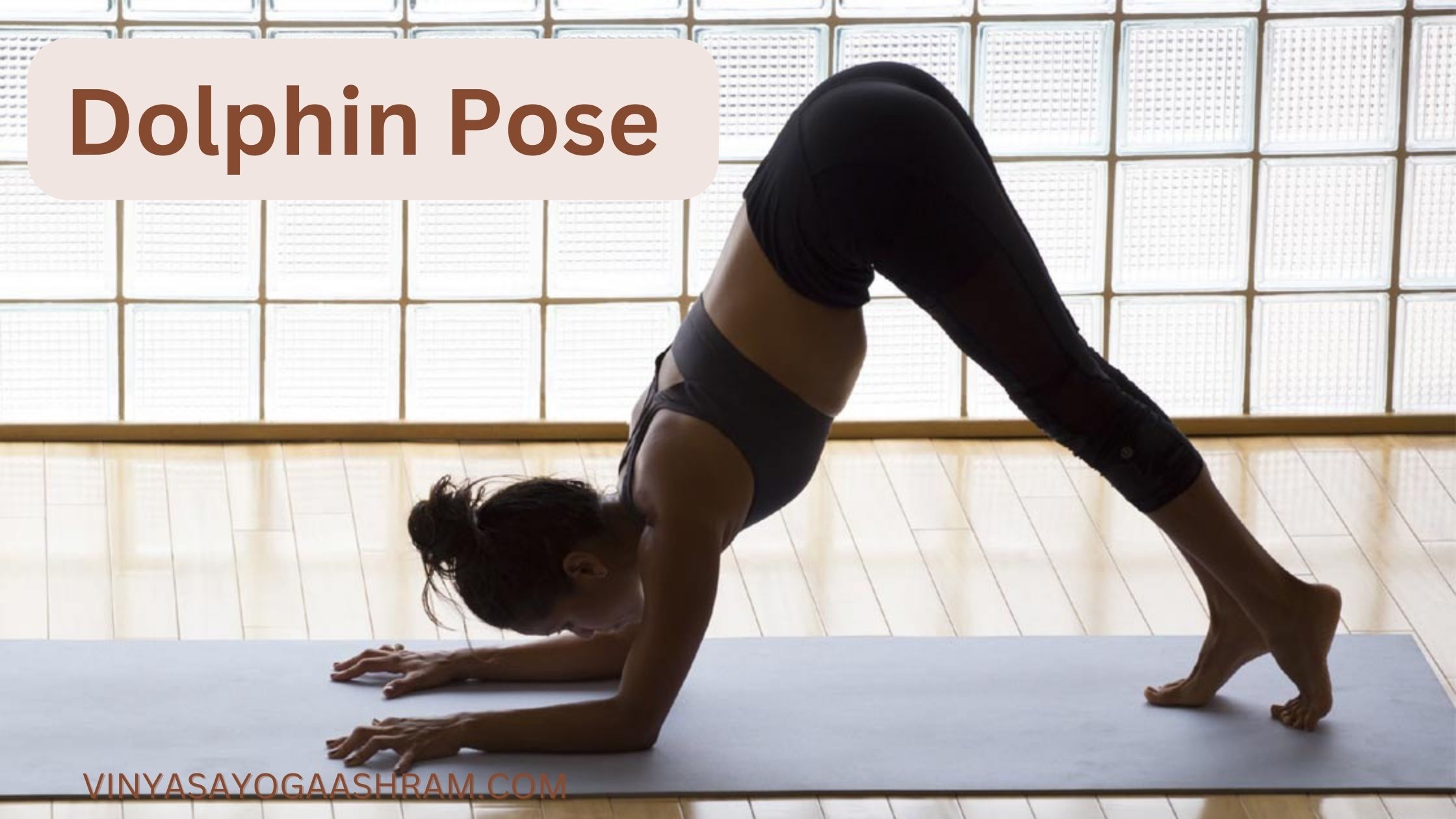
Dolphin Plank Pose is a yoga pose that helps to strengthen the core, arms, and shoulders, while also stretching the hamstrings, calves, and arches of the feet.
This pose is a challenging but rewarding pose that can be modified to suit different levels of flexibility and strength. It’s important to listen to your body and only go as far as feels comfortable for you, avoiding any pain or discomfort. With consistent practice, Dolphin Plank Pose can help improve overall fitness and wellness.
Dolphin plank pose, also known as Makara Adho Mukha Svanasana, is a yoga pose that combines the strengthening benefits of plank pose with the therapeutic benefits of dolphin pose. Philosophically, this pose can be seen as a representation of the qualities of the dolphin and the crocodile, two animals that it is named after. The dolphin represents playfulness, joy, and intelligence, while the crocodile represents strength, stability, and resilience. The Dolphin plank pose is also said to activate the manipura (solar plexus) chakra, which is associated with willpower, self-confidence, and transformation. It can help to build self-esteem, overcome fears, and encourage personal growth.
How to do Dolphin Plank Pose?
Dolphin plank pose is a challenging variation of the traditional plank pose that requires strength, stability, and concentration. Here’s how to do it:
- Begin on all fours in a tabletop position with your wrists directly under your shoulders and your knees under your hips.
- Lower your forearms to the ground, keeping your elbows directly under your shoulders.
- Step your feet back one at a time, coming into a plank pose with your body in a straight line from your head to your heels.
- Protract your shoulders, and engage the abdominal muscles to not let the hips drop down.
- Keep your head and neck relaxed, looking toward your toes or between your hands.
- Hold this position for a few breaths, engaging your core and pressing firmly into your forearms and toes.
- To come out of the pose, lower your knees to the ground and release into child’s pose.
How long should one hold the Dolphin Plank Pose?
The length of time that one should hold the dolphin plank pose can vary depending on their level of experience, strength, and flexibility. It’s generally recommended to start with holding the pose for 10-15 seconds and gradually increasing the time as you become more comfortable and stronger.
For beginners, holding dolphin plank pose for 10-15 seconds can help to build strength in the core, arms, and shoulders, while also improving balance and stability. As you become more comfortable in the pose and build strength, you can gradually increase the hold time to 30 seconds, one minute, or even longer.
For more experienced practitioners, holding the pose for longer periods can challenge the body and mind in different ways. Some practitioners may hold the pose for several minutes, while others may incorporate dynamic movements like leg lifts or hip dips to add variety to the pose.
It’s important to listen to your body and work within your limits, gradually increasing the hold time as your body adapts to the pose. As with all yoga poses, it’s important to focus on the breath and maintain a steady, relaxed breathing pattern. If you experience any pain or discomfort in the pose, it’s best to come out of it and seek guidance from a qualified yoga teacher.
Benefits of Dolphin Plank Pose
- Strengthens the core: Dolphin plank pose engages the entire core, including the abs, back muscles, and glutes. Regular practice of this pose can help strengthen and tone the core muscles, improving posture and stability.
- Builds upper body strength: This pose requires a lot of strength in the arms, shoulders, and upper back. Practicing dolphin plank regularly can help build strength and endurance in these muscles.
- Improves balance: Dolphin plank requires a lot of focus and balance to maintain the pose. Regular practice can help improve balance and stability, which can be useful for other yoga poses and activities in daily life.
- Stretches the hamstrings: Dolphin plank also stretches the hamstrings, which can help reduce tightness and improve flexibility in the legs.
- Calms the mind: Like other yoga poses, dolphin plank can help calm the mind and reduce stress and anxiety. Focusing on the breath and holding the pose can help create a sense of relaxation and peace.
Precautions of Dolphin Plank Pose
- Avoid if you have shoulder or neck injuries: Dolphin plank pose places significant pressure on the shoulders, and neck. If you have any injuries or pain in these areas, it’s best to avoid this pose or modify it as necessary.
- Take it slow: Dolphin plank pose is a challenging pose, so it’s important to take it slow and gradually build up to the full pose. If you’re new to the pose or feeling fatigued, you can start by holding it for a shorter duration and gradually increase the time.
- Engage the core: To prevent strain on the lower back, it’s essential to engage the core muscles while performing the pose. Be mindful not to let your lower back sag or your hips lift too high.
- Avoid if pregnant: If you are pregnant, it’s best to avoid the dolphin plank pose as it places pressure on the abdomen and can be uncomfortable.
- Listen to your body: It’s important to listen to your body and avoid any pain or discomfort during the pose. If you experience any discomfort or pain, it’s best to modify the pose or come out of it entirely.
Learn about these postures and more by joining the upcoming Yoga Teacher Training Course with us at Vinyasa Yoga Ashram.

